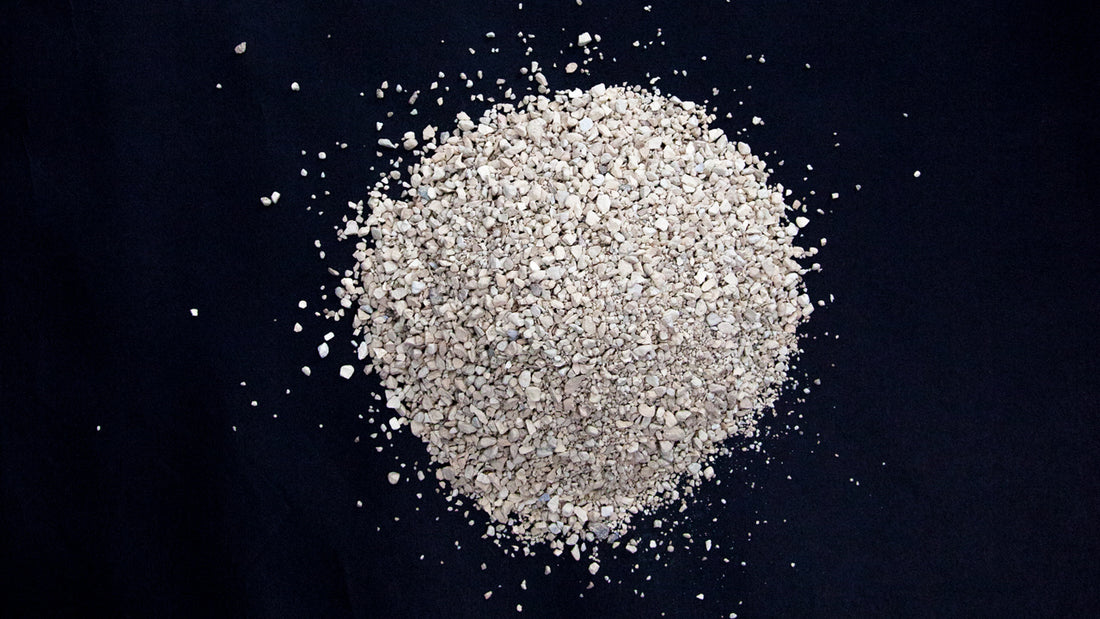You’ve probably heard of diatomaceous earth, and maybe you’ve even used it to protect your plants from crawling insects. But have you heard of the soil amendment called diatomite rock? Diatomite rock is what diatomaceous earth is made from. The small chunks of rock are helpful for improving your garden soil, but their benefits are much different than the powderized form you use for insect control.
Where Does Diatomite Come From?
Diatomite rock is a mined mineral that is formed at the bottom of lakes and oceans, when diatoms – which are a type of microscopic plankton–die and sink to the bottom. There, dead diatoms mix with the mud to form a thick layer of “diatom ooze”. With the correct pressure and other environmental factors, the ooze will compress and cement into rock. Diatomite rock is mostly made of the mineral silica. This is because the diatoms had an external cell wall made of silica, called a frustule. However, diatomite rock is inert in the garden soil, so it will not provide much if any minerals to your plants. Diatoms still swim abundantly in both fresh and salt water today, and are still becoming new rock. However, the rocks that are mined for our use are ancient deposits from dried up freshwater lakebeds.
How Does Diatomite Rock Help My Garden?
- When buying diatomite rock, be sure to use the kind that is labeled for garden use. Diatomite and diatomaceous earth is also used as a filter media and for other industrial purposes, but those types have been treated in ways that are not good for your garden’s health.
- Diatomite rock is used similarly to perlite, vermiculite and pumice. It has a very porous surface that traps and holds equal its weight in water. It also acts as a reservoir for nutrients.
- When the soil dries out, the water is released from the diatomite rock. This allows your plants to withstand environmental stresses more easily, such as drought and heat waves.
- Diatomite rock improves soil structure, increases aeration, and improves drainage.
How to Use Diatomite Rock in My Garden
- It is a stable soil addition that will not break down or compact over time. Just add it once and your garden will enjoy the benefits permanently!
- To use diatomite in your garden, mix 5 pounds per 10 square feet, and mix it into the soil to a depth of 12 inches.
- It’s also great for containers. Mix 10% by volume into your potting mix for most plants. For hanging baskets, bonsai and succulents, you may need 20% or more.
- It can be used to improve your lawn as well. After aerating the turf, apply 100 to 125 pounds per 1000 square feet. Aerating first is essential to get the diatomite rock into the root zone.
Try diatomite rock in your yard and garden, and grow organic for life!
For more information on soil testing, see our video in the resource center.


1 comment
When using it in containers for plants like succulents is best to use alone with the organic matter, like peat w/worm castings, or is better to mix with other aggregates, like pumice, perlite, even calcined clay.
Are there any more benefits to Diatomite vs Calcined Clay? or even benefits of it vs Pumice, Scoria, Perlite? Is it closer in weight to Pumice or Perlite?